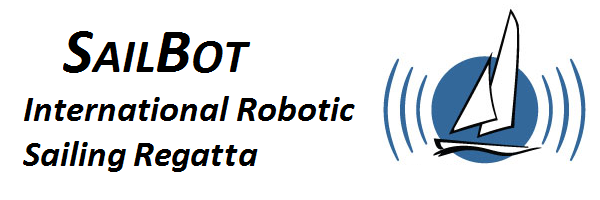Congratulations on thinking about building a SailBot! They are a really fun engineering challenge, and the feeling you get the first time your SailBot sails autonomously is amazing!
But, designing and building one is not trivial. Over the years, dozens of teams have created fully functional SailBots, while dozens more have not achieved their goals. What was the main difference between the two? Project management skills! Having a good plan, identifying the issues, staying on schedule and solving problems are critical to success. Like any other engineering project, don’t try to reinvent the wheel. Build on other’s success.
Here are some lessons learned from previous teams!
Team size is not a big factor in doing well. Successful teams have included a single high school student to 30+ members. Budgets have ranged from $500 to $30,000. One champion boat was built for $695!
Benchmark against successful SailBots your first time! See what worked. Don’t attempt a major new concept until you understand what makes them work.
The boat has to first successfully sail under remote control before it can be made to sail successfully under autonomous control.
The boat has to be watertight! Make sure the hatches are easy to take on and off, you will do that dozens of times a day! Off-the-shelf hatches (“inspection ports”) are better than homemade ones.
Even though your boat is watertight, put all your electronics (except possibly the battery), in sealed containers that are easy to remove from the hull through the deck hatches. Think lightweight Tupperware-type containers rather than heavy Pelican Case-type containers. Use Velcro strips or design holes in your interior deck to hold the boxes in place.
Rudder shafts that pass through the hull and deck in a rudder shaft tube are much more watertight than ones that open into the hull.
Don’t violate Archimedes Law! The submerged volume of the hull needs to be designed to equal the weight of the boat. Most errors of this rule are due to the boat and systems weighing too much, resulting in too little freeboard.
Put handles on the deck to make the boat easy to pick up out of the water!
A boat up to about 20 kilos can be handled by one person. That gives a length of about 1.2 meters. The two-meter boats generally need two people to get them in and out of the water.
The easiest boat to build (that works well!) is a flat bottom sharpie made out of 1/8-inch (3 mm) plywood. It can be built using just three forms (stem, midship and transom), combined with 3/8-inch square chine logs and sheer clamps. A length/beam ratio of 4-5 works well. The freeboard at the bow should be at least six inches and four at the stern. The depth at midships should be at least six inches. 1-2 inches of rocker works well.
Rudders are usually too small. The rudder area should generally be at least 5-10% of the sail area. The rudder shaft should not be farther aft than 25% of the chord. The keel area should be at least 4% of the sail area.
Freestanding rigs are much easier to rig than those with shrouds and stays, and can be as fast.
Wing sails are rarely as fast as cloth sails. Excess weight is often the reason why. This leads to…
Don’t put any unneeded weight on the mast! Stability is key!
There is only one place on the boat where the wind sensor seems to work well in all conditions – about 1-2 feet above the deck at the stern.
If possible, antennas should be mounted to the bottom of the deck on centerline, or on a short mast on the stern. Radio signals will pass through thin plywood or fiberglass, but not carbon fiber (Faraday cage!) or water (think about where the antenna is when the boat heels over).
LiFe batteries are much safer than LiPo! Small AGM SLA batteries are much cheaper and are usually more reliable than any lithium battery system.
Compasses should be mounted as far away from the servos as possible.
Testing on a cart in a parking lot or field is often much more time efficient than going out on the water. Set waypoints and “steer” the cart by following the rudder movements. Don’t forget to “tilt” (heel) your boat to make sure the tilt compensation in the electronics works!
In addition to some papers linked on these pages, numerous articles on SailBot designs were presented at the International Robotic Sailing Conference (in conjunction with the World Robotic Sailing Championship).
Have fun!
